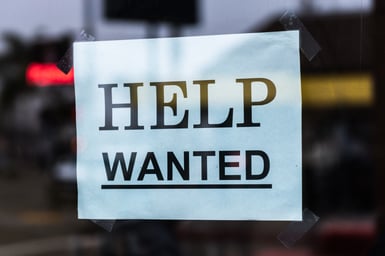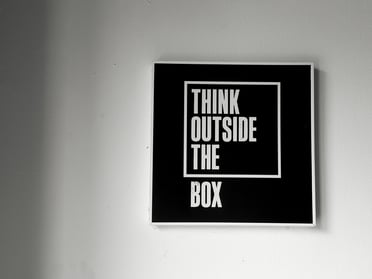Manufacturing is an important sector of the American economy, and in recent years, the industry has been facing a significant labor shortage. This has been a growing concern among industry leaders, as they worry about the impact this shortage could have on production and economic growth.
According to a report by Deloitte and the Manufacturing Institute, an estimated 2.1 million manufacturing jobs could go unfilled by 2030 and the cost of those missing jobs could potentially total $1 trillion in 2030 alone. However, the shortage is already being felt by manufacturers across the country.
As you read along, we will be covering what is causing the labor shortage in manufacturing, how it is impacting American manufacturing, as well as labor shortage solutions.
Why Is There a Labor Shortage in Manufacturing?

There are many factors contributing to the labor shortage in manufacturing, including demographic shifts, industry misconceptions, and changes in the nature of work which we will break down for you below.
Demographic Shifts
Baby boomers, who make up a significant portion of the manufacturing workforce, are retiring in large numbers; the pandemic exacerbated retirements and there are not enough younger workers to replace them. This has led to a significant skills gap, where many workers lack the necessary training and experience to fill the positions that are available.
Lack of Skilled Workers
As the manufacturing industry becomes more technologically advanced, the demand for workers with specialized skills is increasing. However, many workers do not have the necessary training and education to fill these roles. In addition, there is a skilled trades shortage impacting the due to accelerated retirements as a result of the pandemic and the lack of younger generations getting into skilled trades jobs. Some of the skilled trades roles that are difficult to fill in manufacturing are CNC Machinists, Welders, Maintenance Technicians, Industrial Electricians, and Engineers.
Industry Misconceptions
In recent decades, there has been a cultural push towards higher education and a de-emphasis on vocational training in the trades. This has resulted in a shortage of skilled workers in manufacturing. Plus, many young people are not interested in pursuing careers in manufacturing because they view it as dirty, dangerous, and low-paying work. The reality, however, is that modern manufacturing is highly automated and utilizes advanced technologies, making it a clean and safe work environment. Additionally, many manufacturing jobs offer competitive wages and benefits.
Changes in the Nature of Work
The workforce is reevaluating its priorities in the wake of the pandemic. People are in search of jobs that offer more flexibility and work-life balance and are less willing to accept traditional, 9-to-5 jobs, which may not be available in traditional manufacturing roles. That said, there are options for manufacturing workers looking for "gig" type work that offers flexibility and the ability to travel and that's exactly what MADI offers its manufacturing talent. Companies are then able to tap into MADI's national network of experienced production and skilled trades workers that prefer gig work and bring in the experienced talent they're not able to find local to their manufacturing plant. It's a win-win for those seeking job flexibility and manufacturers in need of talent.
How Labor Shortages Are Impacting American Manufacturing

The lack of labor is causing manufacturers to not meet production demands, causing longer lead times, and reduced output. This directly raises consumer prices resulting in lost revenue for businesses. Companies are also feeling pressure to offer higher wages and better benefits in order to attract and retain workers which can be especially challenging for those smaller companies to remain competitive.
Furthermore, the labor shortage is hindering innovation in the manufacturing industry. Many businesses are unable to invest in new technologies or expand into new markets due to a lack of skilled workers. This could lead to long-term stagnation in the industry, which would have negative effects on the broader economy.
How to Solve America’s Manufacturing Labor Shortage

Solving the manufacturing labor shortage will take a unified front. Businesses, policymakers, and educators need to work together to address the root of the problem. Steps to be taken include:
Investing in Training and Education
One of the most effective ways to address the labor shortage is to invest in training and education programs that help workers acquire the skills needed for manufacturing jobs. This could include apprenticeships, vocational training programs, and partnerships between businesses and educational institutions.
Offering Competitive Wages and Benefits
To attract and retain workers, businesses need to offer competitive wages and benefits packages. This could include higher wages, healthcare benefits, retirement plans, and flexible work arrangements. Free lunches and stocked kitchens are also on the rise in industries such as manufacturing, transportation, and logistics – which is something you typically used to hear about only in the tech sector.
Here are the top 5 rising industries reporting that they offer free lunches or snacks to employees:
- Aerospace and defense
- Manufacturing
- Transportation and logistics
- Retail and wholesale trade
- Pharmaceutical and biotech
Learn more about these changes in this episode of The U.S. Manufacturing Workforce Podcast: 2023 Outlook for the Manufacturing Workforce.
Improving Working Conditions
Manufacturing jobs can be physically demanding and require long hours, which can make them unattractive to some workers. Manufacturers can improve working conditions at their plants by implementing policies and practices that prioritize the health and safety of their employees. This can include investing in ergonomic workstations and equipment, providing adequate personal protective equipment, and ensuring proper ventilation and lighting in the workplace.
Employers can also offer training and education programs to help employees develop new skills and advance in their careers. By prioritizing the well-being and professional growth of their employees, manufacturers can create a more productive and loyal workforce.
Leveraging Technology
As the manufacturing industry becomes more technologically advanced, businesses can leverage technology to automate repetitive tasks, increase efficiency, reduce costs, and enhance the quality of their products. This can help offset the labor shortage by reducing the need for workers in certain areas and freeing up workers for higher-skilled roles.
Here are some of the technological advances being used among modern manufacturers:
- Robotics - By using robots for repetitive tasks, manufacturers can increase productivity and reduce the risk of worker injuries.
- Artificial Intelligence (AI) and Machine Learning - These technologies can be used to analyze large amounts of data to identify patterns and optimize processes.
- Supply Chain Management - Internet of Things (IoT) - Tracks inventory levels and automates the ordering and delivery of materials.
- Quality Control Processes - Sensors and other automated systems monitor product quality in real-time and make adjustments as needed.
Partnering with Community Organizations
Businesses can also partner with community organizations to recruit workers from underrepresented groups, such as women, people of color, and veterans. This can help diversify the manufacturing workforce and bring in new talent. For companies located in parts of the country where diversity is lacking, they can partner with staffing agencies like MADI that source their manufacturing talent from across the country. By expanding the talent pool to the entire United States, they're able to bring in employees with various backgrounds, experiences, and skills that may be lacking in their particular area.
Advocating for Policy Changes
Policymakers can play a role in addressing the labor shortage by advocating for policy changes that support training and education programs, incentivizing businesses to invest in their workforce, and providing financial support for workers during times of transition. The National Association of Manufacturers (NAM), released its policy roadmap, "Competing to Win" before the midterm elections which offered a path for bringing the country together around urgent problems such as the ongoing workforce shortage, energy security, immigration reform, supply chain disruptions, and more. Specifically, Competing to Win focuses on:
- Tax: Building On The Promise Of Tax Reform
- Trade: Supporting Manufacturing Jobs and Growth; Removing Uncertainty and Unfair Barriers
- Environment and Sustainability: Creating Cleaner, Safer and More Inclusive Economies
- Energy and National Resources: Strengthening Manufacturing by Capitalizing on U.S. Energy Leadership
- Transportation and Infrastructure: Catching Up and Building for Tomorrow
- Workforce and Education: Equipping the Workforce for Rewarding Careers
- Labor and Employment: Adapting Policies for a 21st-Century Workforce
- Immigration: Reforming the Immigration System for American Competitiveness
- Healthcare: Keeping Americans Healthy and Productive; Unleashing Innovation
- Corporate Governance: Supporting Capital Formation and Protecting Investors
- Research, Innovation, and Technology: Powering Manufacturing 4.0
- Regulatory and Legal Reform: Reducing Barriers to Economic Growth
Traveling Manufacturing Workers
Companies need to be creative when it comes to sourcing talent to meet certain business objectives like starting new production lines or opening new plants. Often times hiring doesn't go as planned companies need immediate, short-term solutions. One solution that has increased since the pandemic, is the demand for traveling manufacturing workers. Companies are realizing that they don't have to let labor shortages, skills gaps, and low unemployment negatively impact their business or prevent it from growing.
By tapping into available production and skilled trades workers from across the country that prefer "gig" work, companies can access more experienced and skilled talent without having to worry about the labor shortage in their local area. By partnering with a manufacturing staffing agency like MADI that sources talent across the U.S., business leaders can quickly access their vast network of experienced production and skilled trades workers and have a workforce brought to their plant, no matter the location. Plus, this provides an immediate influx of labor without interference with ongoing, local hiring efforts.
Supporting U.S. Manufacturing & Economic Growth in America
The manufacturing industry is crucial to the American economy, but it's facing a significant risk with the U.S. labor shortage. Demographic shifts, industry misconceptions, and changes in the nature of work are among the contributing factors. The labor shortage is impacting manufacturers across the country, with longer lead times, reduced output, and lost revenue. To address the issue, a collaborative effort between businesses, policymakers, and educators is needed. This includes investing in training and education, offering competitive wages and benefits, improving working conditions, leveraging technology, partnering with community organizations, and advocating for policy changes. By taking these steps, we can help ensure the long-term viability of the manufacturing industry and support economic growth in America.
The U.S. Manufacturing Workforce Podcast
In order to delve deeper into the challenges and solutions surrounding the manufacturing labor shortage, industry leaders and experts come together on The U.S. Manufacturing Workforce Podcast. This podcast features conversations about the universal challenges facing the manufacturing workforce today and the innovative solutions being developed to overcome them. By sharing insights and experiences from across the industry, this podcast offers valuable information and inspiration for business leaders today. Tune in to learn from the best and brightest in the field and stay up-to-date on the latest developments shaping the future of American manufacturing.
Featured Podcast Episode: The Shift to National Talent Sourcing




.png?width=900&name=Blog%20Header%20(18).png)


Comments
Currently, there are no comments. Be the first to post one!